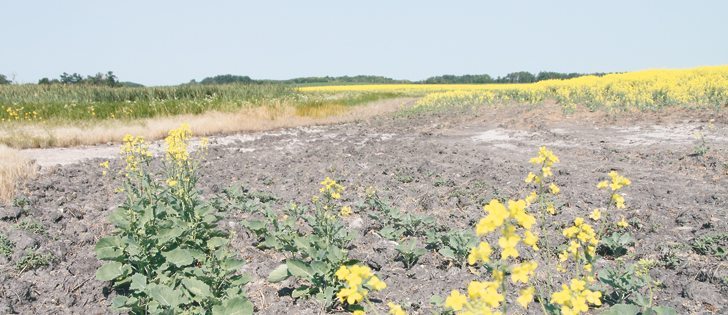BRANDON, Man. — Barley crops are all over the map from eastern Saskatchewan to eastern Manitoba.
The Manitoba leg of the CWB crop tour found barley that was yellowed or patchy, as well as mature and immature heads growing together and good, poor and terrible stands in the same field.
Such a big swath of the Prairies suffering poor barley crops and so little barley seeded this spring means the price outlook could be expected to be bullish.
In one way it is, but most farmers won’t see better barley prices as ad-equate compensation for damage in the field or generally low cereal grain prices.
Read Also

Flax sector sees omega-3 opportunity
SASKATOON — A global shortage of omega-3 oils could be an opportunity for the flax sector, says an industry official….
“They should hold on relative to other crops.… If we have normal fall weather and most (non-barley) crops mature properly without frost, then we don’t have a surplus of feed on the Prairies at all,” said Jim Beusekom of Market Place Commodities in Lethbridge. “But the problem isn’t Canada. The pressure for feed (prices) is coming from other areas.”
Beusekom said prices for new crop barley might have already peaked for 2014-15 unless something bad happens to U.S. and world corn and other feedgrain crops.
Western Canadian farmers seeded only six million acres of barley this spring, and hundreds of thousands of those have been damaged by the deluge of rain that struck the eastern Prairies at the end of June. Barley is a particularly weak crop in the face of saturation, suffering far more than other cereals.
“Yields are just generally suffering a lot,” said Brenda Tjaden Lepp, lead analyst at FarmLink Marketing.
“You can have spring wheat looking great, oats being average, but that’s not the case with barley. It hasn’t really bounced back.”
However, local conditions won’t be enough to raise barley prices to what most farmers see as attractive levels. Expectations of a record U.S. corn crop in the U.S. Midwest and large cereal grain crops in North Dakota will make feedgrain alternatives for barley easy for prairie livestock feeders to obtain.
Beusekom said in one aspect barley shines because there’s not much spread between it and traditionally higher-priced spring wheat or winter wheat in southern Alberta’s feedlot alley. However, hefty corn and world wheat supplies will hold base feed-grain prices down.
“It’s going to take the other markets to move if it’s going to move higher,” said Beusekom.
Farmers need to assume the world is more likely to produce a big feed-grain crop this year than a small one, and that’s bad for the price outlook regardless of the damaged and small size of the prairie barley crop.
“There’s downside risk for sure,” said Beusekom.
Tjaden Lepp said one bright side to the otherwise dreary barley and cereal grain outlook is for unpriced new crop malting barley. Two dollar premiums over feed barley are available, which reveals likely short supplies this winter.
“Is it a concern for the malting companies? Absolutely,” said Tjaden Lepp.
















